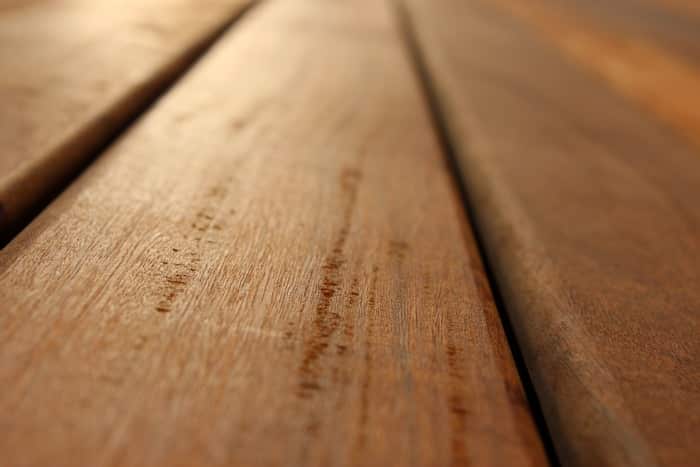Give your timber deck the right treatment
Weather or insects can cause much damage to timber decking, but if you take the time to prepare and treat it properly, maintenance will be easier.

Timber decking adds beauty and extra living space to your home, so give it the right treatment from the start to keep it looking good for longer. Weather or insects can cause a lot of damage to timber decking, but if you take the time to prepare and treat it properly, it will make ongoing maintenance much easier.
A weather window
To get the best results, make sure you have at least two or three days of good weather before you start any deck treatment. You certainly don’t want to have to redo any of the work because of bad weather during the process.
Step one: preparing the surface
The first step in any timber decking treatment is to prepare the surface. If you’re working with bare timber that already has a smooth surface, you just have to clean it thoroughly. Get an effective deck cleaning product that can remove any oil, grease or dirt that would otherwise show through many stains or sealers.
Work safely and wear protective gear such as gloves and safety glasses when using deck cleaners. Keep people, especially children and any animals, away during the process. Don’t forget to thoroughly wash off the deck cleaner afterwards.
A deck that has been treated before needs to be sanded back to bare timber before you can clean it. Starting with rough or medium-grade sandpaper followed by fine will give the best results. Have some extra sheets ready for hard-to-reach areas that need to be done by hand. Now, you can clean it thoroughly, as mentioned in the section above.
Step two: sealing the deck
The preparation work will show its worth now that you’re ready to start the second part of your timber decking treatment: applying a sealer. A wide range of products are available these days, such as decking oils, stains and other sealers. These include all-in-one stain and seal products or clear finish products that let the natural timber colour show through. Apart from the traditional decking oil products, you can also get water-based sealers that are easy to apply and clean up afterwards.
The amount of sealer you need depends on how porous the timber is and your chosen product type. As a guide, treated pine needs more sealer than hardwood. Take these things into account when calculating how much you need to buy.
Aim to finish the full length of two or three boards at a time rather than break off part of the way along. This is because any overlap will be evident in the finish. Apply the sealer with a pad applicator or roller, and use a brush for any detailed work or hard-to-get-at places. Work in one direction, not back and forth. It’s usually best to apply one thin coat and let it dry thoroughly before applying the next coat.
Timing, preparation, good product choices and careful application will have your timber decking looking great and lasting longer. If you’re not confident with your DIY skills or if you just lack the time to treat your deck, you can always hire a decking specialist to do the work for you. Choose one with lots of experience in decking treatment to ensure that you get amazing results.